Mataw Guro Louelle Lledo Jr. Part 1:
Mataw Guro Louelle Lledo Jr. Part 2:
Filipino Fighting Art of the Mandirigma: Amara Arkanis is a three-faceted art: The first Facet is the Armed Fighting with the use of weapons. There are three main weapons group of Amara Arkanis, and several variations of these main weapons. The three main weapon groups are:
- Rigid / stiff weapons
- Flexible / pliable weapons
- Projectile / casting weapons
As early as the start of civilization, the use of a crude type of weaponry had been recorded in history. The discovery, first of fire, then gunpowder, marked the evolution of more sophisticated weaponry.
Despite these discoveries, the use of basic rudimentary weapons, such as the sword, bow and arrow, spear and the like, was developed to a higher level, instead of being shelved in the back burner.
Even now, with laser-guided bombs and bullets, the ordinary foot soldier still carries a trusty knife for use when all his advanced gadgets fail and knife fighting is still a very important part of a soldier’s training.
Although based on native origin, the development of Filipino homegrown weapons, were influenced by several conflicts with foreign invaders. In fact, the Igorot axe, found to have the most efficient hacking design with the center of gravity at the head, was a “copy” of the Arabic scimitar knife.
Delfin Bernarte’s design of the medya-luna was inveigled by the Igorot axe. These designs can be traced back to the time of Alexander the Great, and possibly even earlier back to biblical times.
To defend themselves, the Filipinos devised offensive and defensive techniques in the use of various instruments available and developed the fighting art the Spaniards called Armas de Mano, later Pilipinized to Arnis de Mano. Louelle Lledo now calls his art Amara Arkanis.
The second Facet is the Unarmed Fighting. There are three classifications of Amara Arkanis unarmed fighting:
- Kicking and striking
- Throwing and takedowns
- Joint reversal and submission techniques
These unarmed fighting techniques are based on Sikaran, Kuntawan, Silat and the techniques of Bernarte Brokil Sistemang Praksiyon but highly influenced by Japanese Goju-ryu Karate.
The third Facet is the Healing Phase. The two divisions of this aspect are:
- Internal – which includes meditation and self-hypnosis
- External – which includes accu-pressure, spine-manipulation, bone – setting, massage and application of herbs.
Like the “killing” aspects of Amara Arkanis, the “healing” aspect is also a carry-over of Bernarte Brokil Sistemang Praksiyon. Delfin Bernarte was also the town “manggagamot” (healer).
He has a collection and concoction of local herbs, vegetables and fruits that he prescribes from stomach ache to various diseases. His most prescribed brew is ampalaya (bitter melon), banaba and bayabas leaves tea.
For muscle aches and pains he blends ginger root, garlic and coconut oil. He also dispenses plain coconut oil for various ailments.
A close examination will reveal that all these facets are the interwoven foundation of a complete martial art. All the techniques in the armed and unarmed systems may be executed with or without any weapon.
The fact is, weapons such as sticks or knives are regarded as an extension of the hand, which is an extension of the mind.
For educational and learning purposes, Amara Arkanis, being a Martial Arts Education Program, the unarmed techniques and the armed techniques are presented separately so a better understanding of the art is achieved.
The student, however, must always remember that all and every technique, particularly hand techniques, may be executed with or without weapons.
Twenty-eight years ago, in 1980, Luis Rafael C. Lledo, Jr., better known as Louelle Lledo, in his desire to bring back the original mandirigma spirit to the fighting arts, established Amara Arkanis, a product of the continuous evolution of the fighting arts he has learned. It is not a style but a martial arts education program.
When Lledo founded Amara Arkanis Filipino fighting art, he held the rank of Ika-6 Na Antas Sagisag Na Itim (6th degree Black Belt) in Japanese Karate and the title of Punong Guro (head instructor) in the Bernarte Brokil Sistemang Praksiyon in the Filipino fighting arts.
The first seeds of Amara Arkanis were born in 1959 in Zamboanga City on the island of Mindanao, in Southern Philippines. Lledo was first introduced to the rudiments of the fighting arts by his grandfather, his father and his uncles.
His great grandfather, Antonio Marquez Alvarez, a descendant of the Spanish conquistadors, taught him the European style of fencing while he was still very young. His father, Luis Lledo, Sr., then an intelligence officer of the Philippine Air Force, taught him the military, albeit dirty style of hand-to-hand combat.
At an early age, Lledo also became an expert in combat shooting, both with rifles and handguns. After school, Lledo, apprenticed in a boxing gym operated by his uncles Ramon and Antonio Lledo, local boxing promoters and champions of Zamboanga City, where he learned the manly art of boxing.
Lledo, although not of royal heritage, but nonetheless from an influential family, was also schooled in the secret Muslim fighting arts of Kuntawan and Silat.
He became adept in the arts of Kuntawan and Silat. At the same time, Lledo took up Karate under Joe David of the Kyokushinkai style of Karate and was awarded his 1st Degree Black Belt as he celebrated his 18th birthday.
In his desire to learn more about the fighting arts and to pursue a degree in Medical technology, he went to Manila and trained further in the different arts and styles of fighting.
He sought the instructions from the masters including Delfin Bernarte an expert in Brokil (Pampanga style of Arnis).

Delfin Bernarte Originator of the Bernarte Brokil Sistem Praksiyon with Louelle Lledo
(Heir to the System and Founder of Amara Arkanis).
1972 was a memorable year for Louelle Lledo. Grandmaster Gogen Yamaguchi of the Japan Goju-ryu Karate Association came to the Philippines upon the invitation of the Philippine Karate Association, the ruling body of Karate in the Philippines.
Being an exponent of the Goju style of Japanese Karate, Lledo was assigned to provide assistance to Grandmaster Gogen Yamaguchi and the entourage of the Japan Gojukai during their stay in the Philippines.
Lledo had the unique opportunity to train with the seniors of the Japan Goju-ryu group under the watchful eyes of Grandmaster Gogen Yamaguchi. Due to his diligence and skill in the fighting arts, he was promoted to the 4th Degree Black Belt in Karate in the same year.
It was also in 1972 that Delfin Bernarte’s dream of passing on the stewardship of the Benarte Brokil Sistemang Praksiyon to a family member came to reality when Lledo, and Flora Bernarte (Delfin’s daughter) tied the knots of holy matrimony.
It was also then that he became acquainted with Remy Presas, who was in the initial stages of establishing the Modern Arnis Federation of the Philippines, and Remy’s brother Ernesto Presas.
Louelle Lledo with Grandmaster Gogen Yamaguchi of Japan Karate-do Gojukai and with Grandmaster Hwang Kee of Korean Tang Soo Doo, Moo Doo Kwan.
In 1974 Lledo was named head referee during the International Invitational Karate Championships, hosted by the Philippine Karate Association.
For the first time, Karate Grandmasters from Japan, Okinawa and Korea were gathered together in the Philippines for the occasion.

Louelle Lledo with Grandmaster Gogen Yamaguchi of Japan
Karate-do Gojukai and with Grandmaster Hwang Kee of Korean
Tang Soo Doo, Moo Doo Kwan.
Again Lledo had the opportunity to attend to Gojukai Grandmaster Gogen Yamaguchi and the seniors of the Japan Karate-Do College.
Lledo likewise had the opportunity to learn the concepts of Korean Tang Soo Doo from Grandmaster Hwang Kee, who extended his stay after the International Invitational Karate Championships.
Although there was a local Tang Soo Doo group in the Philippines, Grandmaster Hwang Kee, like Grandmaster Gogen Yamaguchi, requested PKA President Dante Nagtalon to have Lledo accompany him during his stay in Manila.
Aside from Karate, Lledo trained not only in Brokil but also in various Arnis styles. He trained in the traditional system of Arnis as propagated by Master Porfirio Lanada and the innovative system of the Daniel Rendal Innovative School of Filipino Fighting Art.
Lledo also trained in the traditional system of Arnis propagated by Porfirio Lanada (behind Lledo) and the innovative style of Daniel Rendal.
Masters of Arnis de Mano found a way to treat and temper a type of hardwood known as bahi, making it tough and strong as steel. It was a popular belief of superstitious Filipinos that the master imbues the bahi with his spirit, personality and his anting-anting (amulet).
This bahi and anting-anting were passed on to the successor in a highly secret ritual just prior to the master’s demise. It is said that unless the anting-anting is passed on to the successor, the master’s final moment will be agonizingly long in coming.
It was rumored that Delfin Bernarte’s bahi and anting-anting were passed on to Lledo, something that Lledo neither denies nor confirms. He, however, admits that he was named successor to the Bernarte Brokil Sistemang Paraksiyon.
In recognition of his skill in stick fighting, Remy Presas awarded Lledo the 5th Degree Black Belt in Modern Arnis.
Lledo’s training in the martial arts included Tai Chi Chuan under Ed Cayetano. Fortunato Sevilla and Francisco Alvina were Lledo’s instructors in Judo and Ju-jitsu.
He learned the concepts of Korean Tang Soo Doo from Grandmaster Hwang Kee. Lledo learned Sikaran, various styles of unarmed combat and Soong Leong Kwan (Double Dragon School), Kung-Fu, from Emmanuel Querubin, who learned it from Chan Keng Wan, the last living master of Soong Leong Kwan Kung-fu.

Ed Cayetano instructs Louelle Lledo in application of Tai Chi Chuan techniques using a double cane.
Lledo’s associates and training partners, particularly Inocencio Glaraga of the Kalaki School of Kali, Yaming and Arnis, Yoli Romo of the Philippine Pamantukan Penjakali Stick Boxing Society and Rodel “Smoking Sticks” Dagooc of Modern Arnis Philippines, further enriched his experience with other systems of stick fighting.
In 1975, Lledo was accredited as an international referee by the World Union of Karate-Do Organizations. (WUKO), the world ruling body in Karate and was called upon to officiate in the Third World Karate Championships held at Long Beach, California.
While in Long Beach, Lledo became closely associated with Ed Parker, father of American Kempo. Parker played host to Lledo and other officials of the Philippine National Karate Team, whom he chauffeured around in the Cadillac given by Elvis Presley.
Parker and Lledo spent considerable time exchanging ideas and techniques during the training sessions of the Philippine Karate Team which Ed Parker always attended.
Parker became an honorary member of the Philippine National Karate Team which placed fourth in the team competition in the 3rd World Karate Championships.
In 1975 there was a reversal of role. Lledo became a guest of Grandmaster Gogen Yamaguchi at the latter’s Japan Karate-Do College in Tokyo, Japan. Lledo continued his brief but intensive training under the senior instructors of Gojukan which started in 1972 and 1974.
The exchange of information and techniques with the various martial arts leaders and practitioners during his foreign travels and in their visits to the Philippines further enriched his understanding and experience in the fighting arts.
In 1980 after Delfin Bernarte passed on the stewardship of the Bernarte Brokil Sistemang Parkasiyon to Louelle Lledo and named him Punong Guro, Lledo established an eclectic system of fighting geared towards an individual’s psychological and physiological makeup. It is not a new combative art rather it is a further evolution of the various martial arts that Lledo trained and learned.
 Lledo’s ultimate goal in establishing the system is to develop a person’s character through the rigid and strict discipline required in training in the fighting arts. To give the system his personal touch and to reaffirm its ultimate goal, Lledo named the art Amara Arkanis.
Lledo’s ultimate goal in establishing the system is to develop a person’s character through the rigid and strict discipline required in training in the fighting arts. To give the system his personal touch and to reaffirm its ultimate goal, Lledo named the art Amara Arkanis.
Amara means balance (positive/negative). Arkanis is a unification of the armed art of Arnis and the unarmed art of the fist (Kamao). Taken together, Amara Arkanis is the art of achieving balance in life through the fighting arts.
Amara Arkanis is an on-going, ever-growing, never-ending active learning martial arts education process. It is an art that evolved from fighting systems that were developed in the battlefield. Like its predecessors, techniques of Amara Arkanis are deadly and fatal. The only difference is the end result.
The main purpose of the early fighting arts was to kill the enemy instantly. The trophy was being alive and there was no such thing as being second best.
In competition where rules have been established, the aim of Amara Arkanis is to win the gold medal. In self-defense situations, the goal is to neutralize the threat, without necessarily permanently maiming or killing the opponent.
The philosophy and psychology of Amara Arkanis is consistent with the philosophy and psychology of ancient combative arts. The techniques and application are still the same.
The weapons, however, have changed. From Kalis to Itak then to bahi and rattan cane, padded sticks are now utilized. Protective body armor is also adopted to prevent injuries. Even with these safety precautions, every technique of Amara Arkanis has the potential to be fatal.
Another innovation of Amara Arkanis from its predecessors is the way the art is being taught. The ancient Filipino fighting arts were taught one on one, by the teacher to the student giving birth to different styles and various schools. There were no organized drills and systematic patterns of techniques.
From day one, the manner of training was fight situations where the teacher engages and the student tries to evade. Until the teacher decides that the student is ready to fight and test his skill, the training is engagement and evasion. This type of training is long and hard and a lot of times unproductive.
Until as late as the 1950’s, students get their “certification” as an arnisador (arnis de mano practitioner) by actual combat with somebody from another school or style.
Those who survived live blade fights carry their scars as a badge of honor. Although far and few in between, live blade contests are still held in secrecy. Following the practice of other martial arts, Arnis has now grades, ranks and different color belts.
When Lledo formalized the curriculum of Amara Arkanis, he called on his experience both as a martial artist and a physical education teacher.
He knew that in order for the art to flourish and expand, the traditional way of teaching must give way to the modern method of propagation with emphasis on martial arts education program rather than any particular style or school of thought.
Lledo’s legacy in the martial arts reached far and wide. In 1990, Lledo was awarded the title of Senior Renshi and was named Philippine director of the International Goju-ryu Karate-Do Federation. The IGKF is an independent Okinawan-sanctioned Goju-ryu organization, headed by Hanshi Tino Ceberano.
Lledo’s expertise in teaching the fighting arts was recognized when he was appointed chief defensive tactics instructor of the Headquarters, Philippine Integrated National Police Training Command, and National Capital Regional Training Center at Fort Bonifacio in Metro Manila.
After graduation from the National Bureau of Investigation’s Academy he was made chief combative strategies instructor of the National Bureau of Investigation (the Philippine version of the FBI).
He also headed a team of intelligence and security agents for then Mayor Bagatsing of the City of Manila, and trained the Civil Intelligence and Security Unit of the City of Manila in the combative arts.
The State Colleges and Universities Athletic Association (SCUAA) Region IV voted Lledo president of the SCUAA Martial Arts Organization while The International Modern Arnis of the Philippines, founded by Remy Presas appointed Lledo Regional Commissioner.
 Lledo holds a rank of captain in the Philippine Air Force Reserves. He traveled around the Philippines giving instructions and seminars in the Amara Arkanis School of the Filipino Fighting Art. He was also Chief Combat Instructor of the 1st Air Division and the 304th Security Squadron of the Philippine Air Force.
Lledo holds a rank of captain in the Philippine Air Force Reserves. He traveled around the Philippines giving instructions and seminars in the Amara Arkanis School of the Filipino Fighting Art. He was also Chief Combat Instructor of the 1st Air Division and the 304th Security Squadron of the Philippine Air Force.
In 2002, Lledo migrated to the United States carrying with him the title of Ambassador Plenipotentiary of the Department of Tourism’s Office of Philippine Indigenous Fighting Arts.
In January 2003, Lledo was bestowed the Grandmaster of the Year Award of the Filipino Fighting Arts, by the Action Martial Arts Magazine Hall of Fame. The following year in 2004, Action Martial Arts Magazine again honored Lledo with the coveted Excellence Award in the Preservation of the Martial Arts.
Lledo’s skill and integrity spread like wildfire in the East Coast. Together with Dr. Christopher Viggiano, a Chiropractor by profession and founder of the Shen Wu Dao School of Martial and Healing Arts, they established the Sword Stick Society. The Society’s main objective was to bring together the various schools of martial arts.
Under the auspices of the Sword Stick Society, a martial arts gathering was held and for the first time different schools of Filipino Fighting Arts assembled in an atmosphere of camaraderie and unity.
For Louelle Lledo, it was just the beginning. In 2006 the American Society of Internal Arts (Tai Chi) invited Lledo to give a workshop about Amara Arkanis. He has since then been an annual guest lecturer.
In September 2008, for the first time, Lledo bridged the gap between the Filipino Fighting Arts and Chinese Fighting Arts. The Traditional Wing Chun Kung-fu Association of the East Coast headed by Keith Mazza, with the blessings of Wing Chun Grandmaster William Cheung, invited Lledo to do a very successful joint workshop.
The success of this workshop and Lledo’s expertise in the martial arts got the attention of the Wong Fei Hung Ga Kung-fu International Association and in their 13th Annual Championships invited Lledo to officiate.
In January 2009, for the third time Action Martial Arts Magazine Hall of Fame will honor Louelle Lledo with another award as Ambassador of Goodwill of the Martial Arts for bridging the gap between the Filipino and Chinese Fighting Arts.
Zikdokan Amara Arkanis – International
Filipino Martial Arts Education
Mataw Guro/Shihan Luis Rafael ‘Louelle’ Lledo, Jr.
25 Foxglove Drive
Delran, NJ 08075
(609) 456-3589
www.amara-arkanis.com
 Amara Arkanis
Amara Arkanis
“The Fighting Art of the Mandirigma”
By: MatawGuro Louelle Lledo Jr.
MatawGuro Louelle Lledo Jr. is the Founder of Amara Akanis and writes the column FMA Educational Depot for the FMAdigest.
This book is designed for the Beginner in the Filipino martial arts, so they will have a concrete foundation, going through a step-by-step learning of the fundamentals.
It is for the Advanced Student who may not have gone through this type of training, so they will understand the underlying principles of the maneuvers they execute.
And for the Prospective Teacher, so they can better organize a more systematized lesson plan or course of study for a more effective and efficient teaching and learning experience of the Filipino martial arts.
This is the same Filipino Martial Arts Education Program that MatawGuro Louelle Lledo used successfully at the State Colleges and Universities Athletic Association Region IV and his students who are teaching in the Philippines. This book is a necessity to those who wish to format their teaching at a higher educational level and give their students a deeper understanding of their training..
Over a 172 pages packed with pictures and examples.
Price: $35
Shipping and Handling: $8
Total: $43
Payable to: Louelle Lledo Jr.
“Money Order ONLY”
Send to: Amara Arkanis International
PO Box 1403, Delran, New Jersey 08075
(Originally published in FMA Digest)

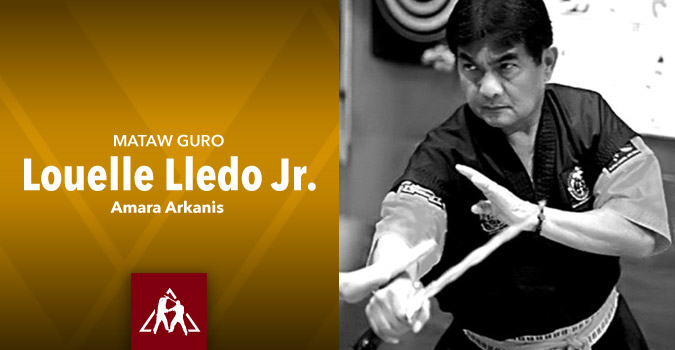
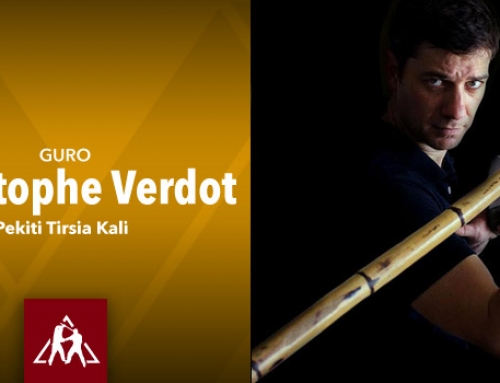
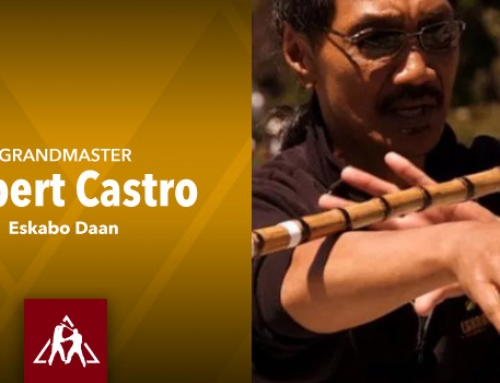
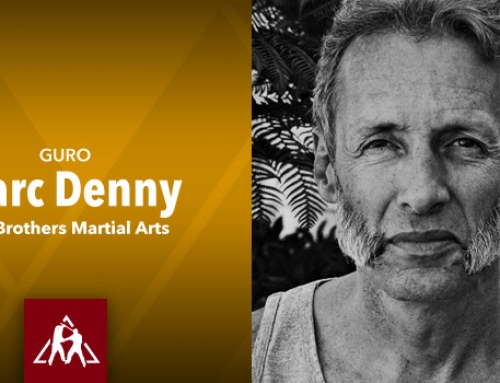
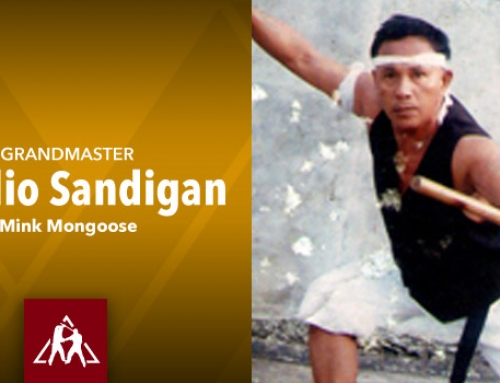

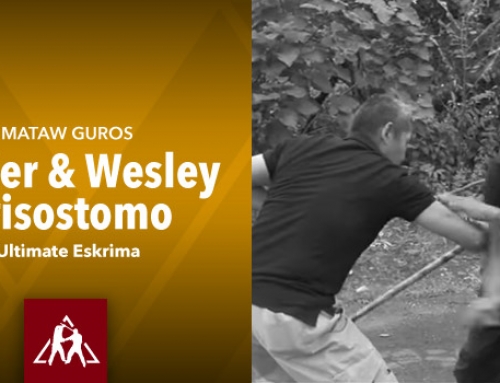
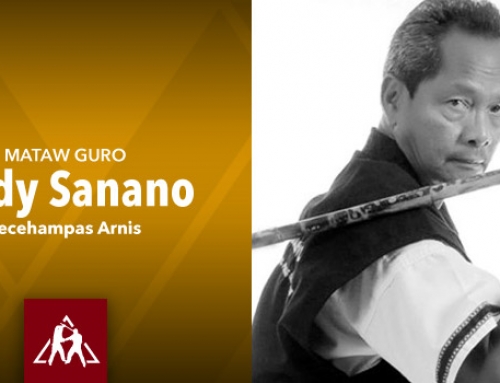
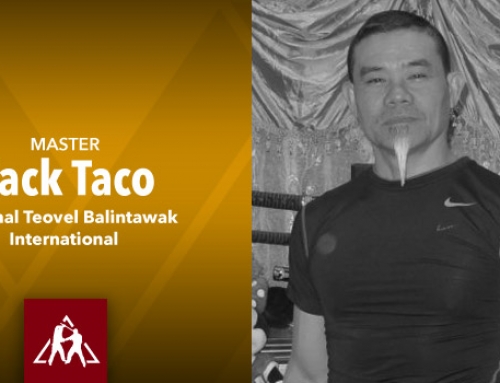
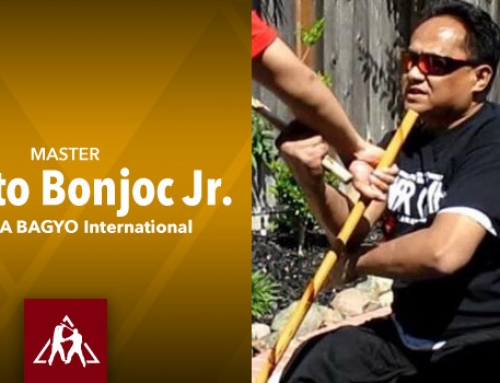
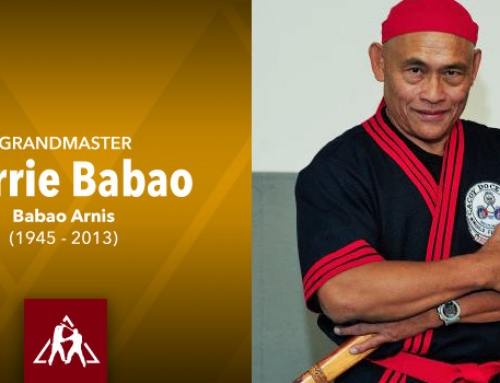
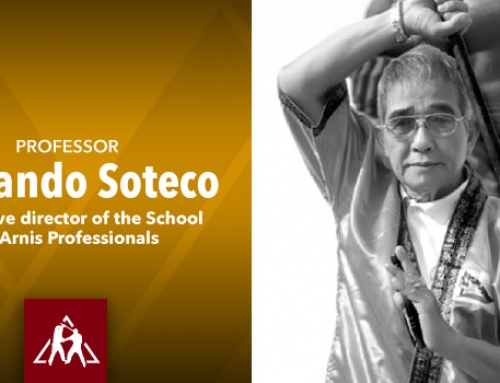
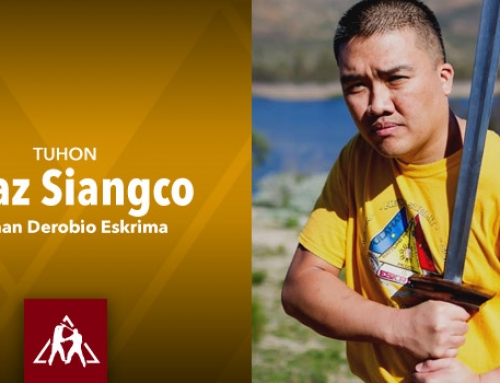

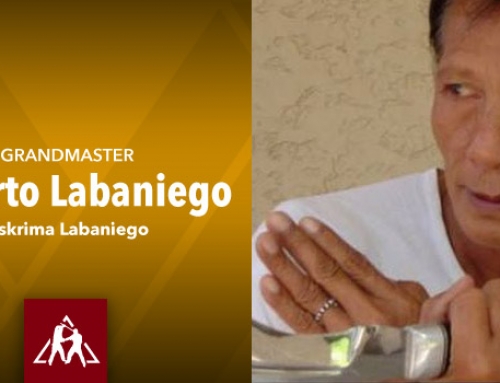

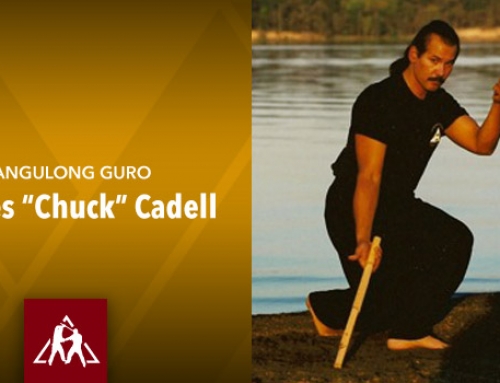



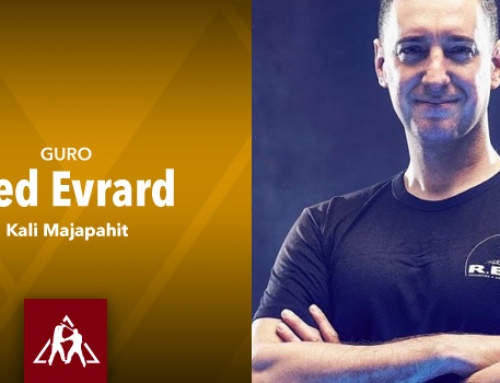
Leave A Comment
You must be logged in to post a comment.